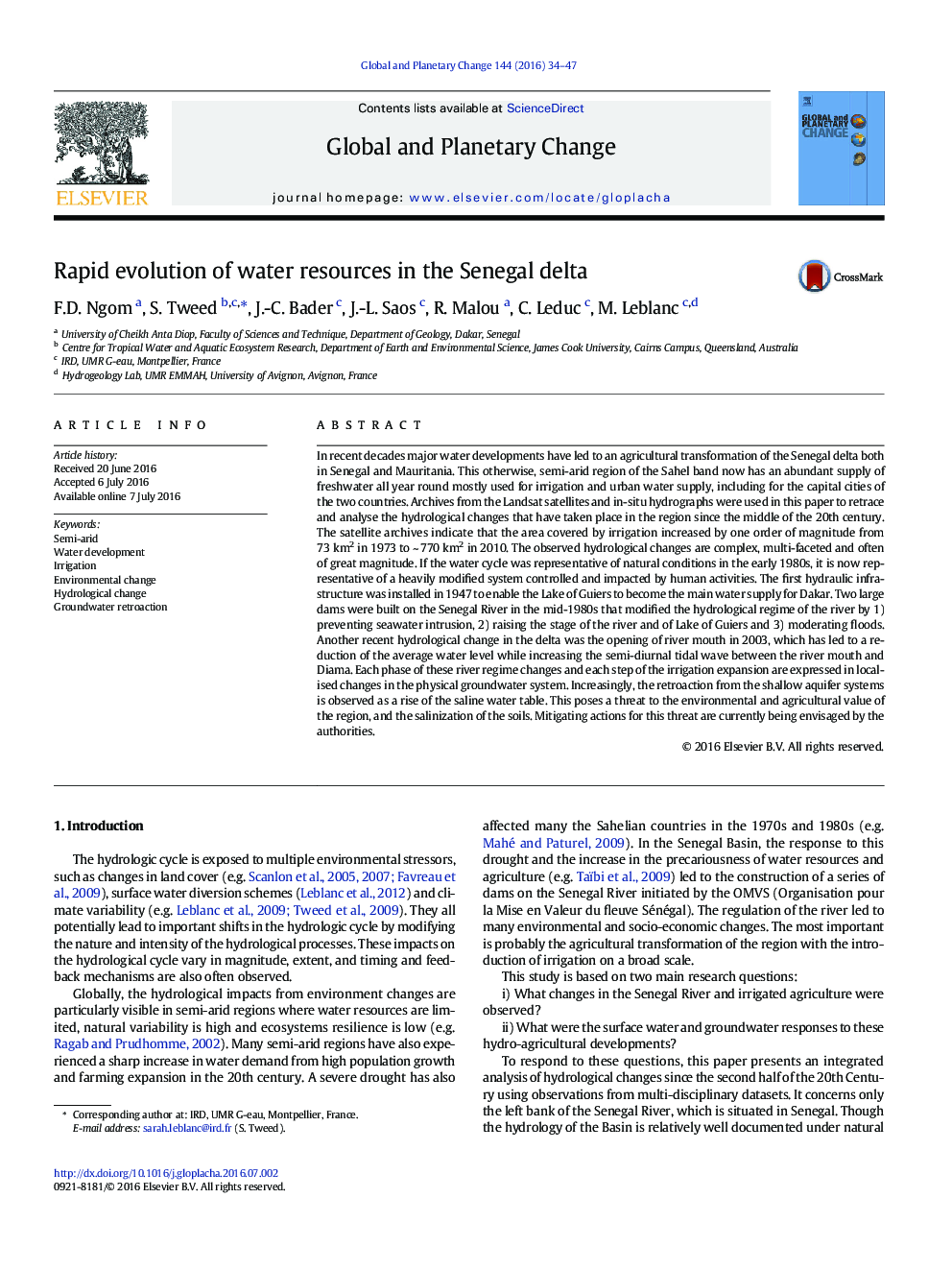| کد مقاله | کد نشریه | سال انتشار | مقاله انگلیسی | نسخه تمام متن |
|---|---|---|---|---|
| 4463267 | 1621638 | 2016 | 14 صفحه PDF | دانلود رایگان |
• Semi-arid region of the Sahel band now has an abundant supply of freshwater.
• Water developments have led to an agricultural transformation of the Senegal delta.
• Irrigation area increased from 73 km2 in 1973 to ~ 770 km2 in 2010.
• Resultant groundwater changes are complex and multi-faceted.
In recent decades major water developments have led to an agricultural transformation of the Senegal delta both in Senegal and Mauritania. This otherwise, semi-arid region of the Sahel band now has an abundant supply of freshwater all year round mostly used for irrigation and urban water supply, including for the capital cities of the two countries. Archives from the Landsat satellites and in-situ hydrographs were used in this paper to retrace and analyse the hydrological changes that have taken place in the region since the middle of the 20th century. The satellite archives indicate that the area covered by irrigation increased by one order of magnitude from 73 km2 in 1973 to ~ 770 km2 in 2010. The observed hydrological changes are complex, multi-faceted and often of great magnitude. If the water cycle was representative of natural conditions in the early 1980s, it is now representative of a heavily modified system controlled and impacted by human activities. The first hydraulic infrastructure was installed in 1947 to enable the Lake of Guiers to become the main water supply for Dakar. Two large dams were built on the Senegal River in the mid-1980s that modified the hydrological regime of the river by 1) preventing seawater intrusion, 2) raising the stage of the river and of Lake of Guiers and 3) moderating floods. Another recent hydrological change in the delta was the opening of river mouth in 2003, which has led to a reduction of the average water level while increasing the semi-diurnal tidal wave between the river mouth and Diama. Each phase of these river regime changes and each step of the irrigation expansion are expressed in localised changes in the physical groundwater system. Increasingly, the retroaction from the shallow aquifer systems is observed as a rise of the saline water table. This poses a threat to the environmental and agricultural value of the region, and the salinization of the soils. Mitigating actions for this threat are currently being envisaged by the authorities.
Journal: Global and Planetary Change - Volume 144, September 2016, Pages 34–47
